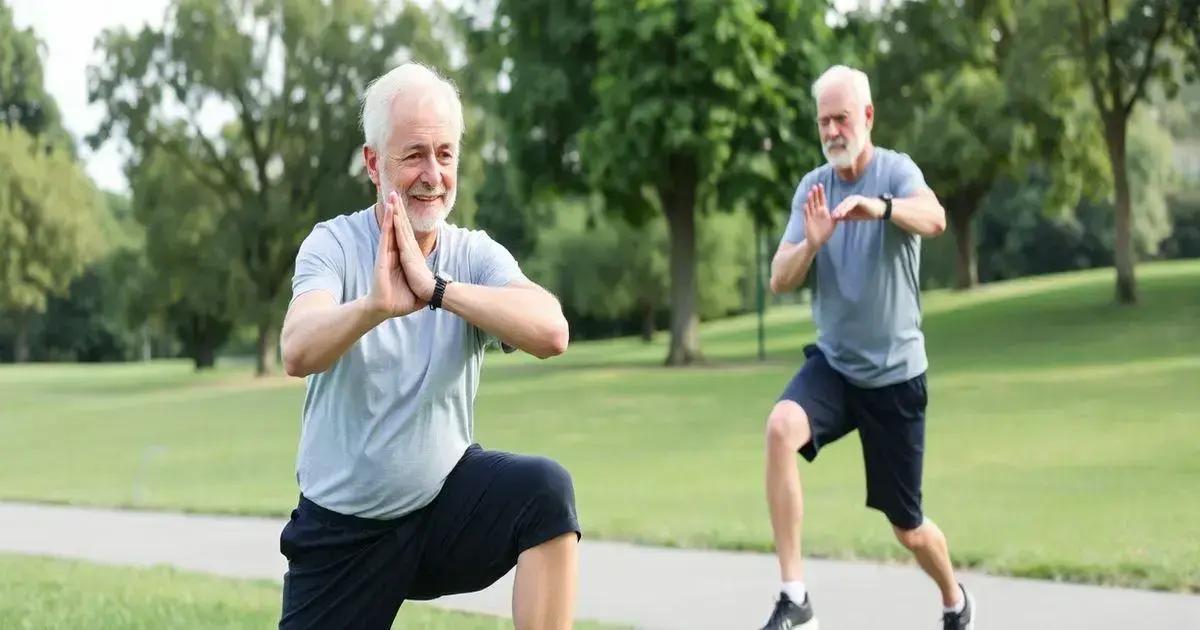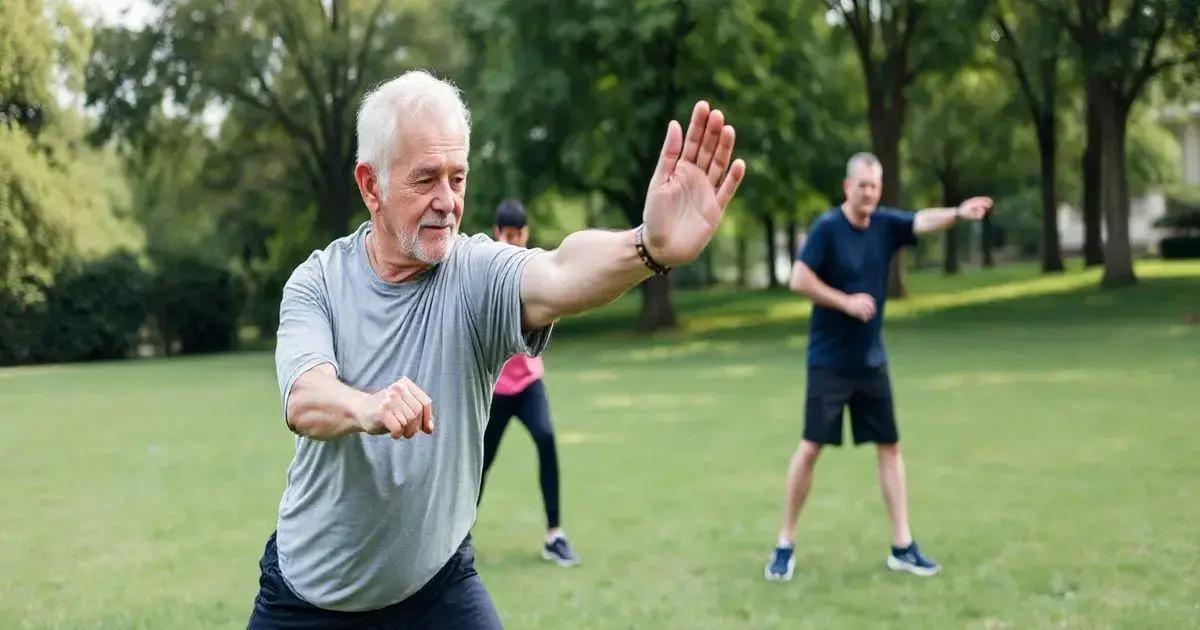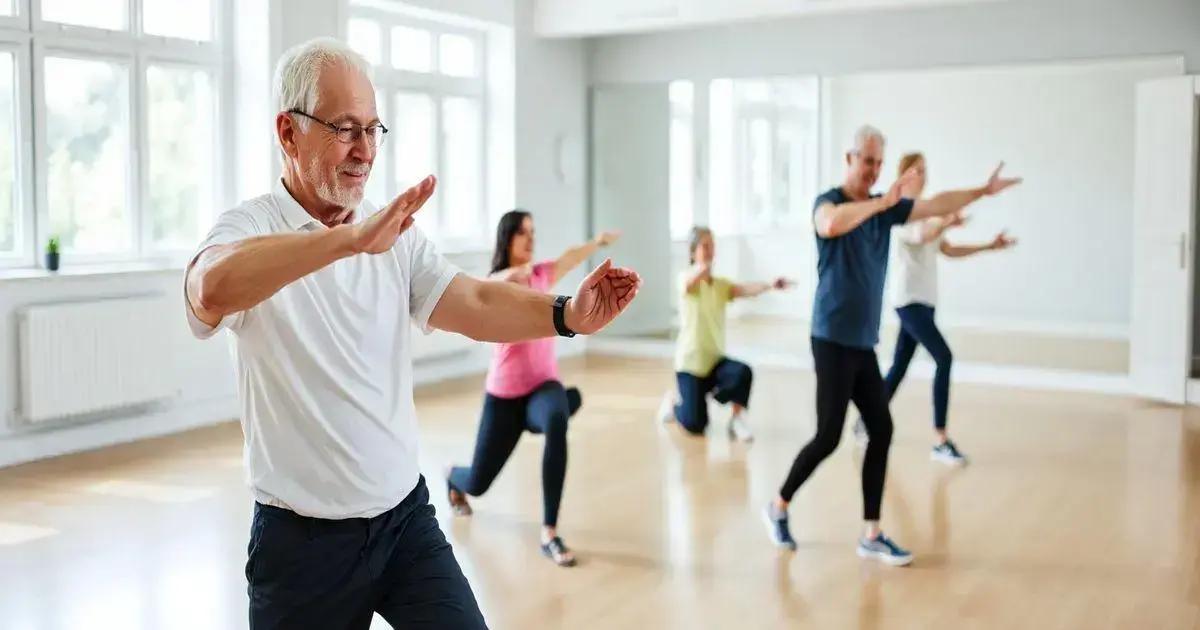The shift toward mobility-focused exercises for older men enhances flexibility, strength, and balance, significantly improving their quality of life and independence through easily accessible routines.
As we age, our bodies undergo significant changes that can affect mobility and independence. The shift toward mobility-focused exercises for older men has become increasingly important, as these activities not only enhance physical fitness but also contribute to overall well-being. In this article, we will delve into the benefits of these exercises, how to implement a routine, and address common myths associated with mobility training.
Understanding Mobility-Focused Exercises

Understanding mobility-focused exercises is essential for older men looking to maintain their health and enhance their quality of life. Mobility exercises are activities designed to improve the body’s ability to move effectively and efficiently. These exercises focus on increasing flexibility, strength, and coordination, which are crucial as we age.
What are Mobility-Focused Exercises?
Mobility-focused exercises include a variety of movements that can help increase range of motion in the joints. Examples include gentle stretching, balance work, and functional movements that mimic daily activities. Unlike high-intensity workouts, these exercises can be performed at a comfortable pace, making them more accessible for older adults.
Why are They Important?
As people age, stiff joints and reduced muscle strength can make simple tasks more difficult. Mobility exercises help to combat these issues by enhancing overall mobility and stability. This means older men can enjoy an active lifestyle, perform daily tasks with ease, and reduce the risk of falls.
Key Components of Mobility Exercises
Effective mobility exercises often include:
- Stretching: This improves flexibility and eases muscle tightness.
- Balance Training: Helps in maintaining stability and prevents falls.
- Core Strengthening: Supports posture and improves functional movement.
Incorporating these components can create a well-rounded routine that addresses various fitness needs. It’s important to start slow and gradually increase intensity to avoid injury.
Getting Started
Before beginning a new exercise routine, older men should consider consulting with a healthcare provider or a fitness professional specializing in senior fitness. They can provide tailored advice and ensure that exercises are safe and effective for individual health conditions.
Benefits for Older Men

Engaging in mobility-focused exercises offers numerous benefits for older men. These exercises can significantly enhance physical health and overall well-being.
Improved Flexibility
One major benefit is increased flexibility. As we age, muscles and joints can become stiff. Mobility exercises help loosen these areas, making it easier to move through daily activities.
Enhanced Strength
Mobility-focused exercises also promote strength. By engaging different muscle groups, older men can build strength without the strain sometimes associated with traditional weightlifting.
Better Balance and Coordination
These exercises are vital for improving balance and coordination. Better balance helps reduce the risk of falls, which is critical for maintaining independence.
Increased Energy Levels
Participating in regular mobility exercises can boost energy levels. Many older men find that staying active leads to better sleep and overall vitality throughout the day.
Social Interaction
Often, mobility classes provide opportunities for social interaction. Meeting others with similar goals can increase motivation and make exercising more enjoyable.
Support for Mental Health
Exercise is known to improve mood and reduce anxiety. Mobility-focused work encourages a positive mindset, contributing to better mental health.
Quality of Life
Overall, incorporating mobility-focused exercises into a routine can lead to longevity and a better quality of life. Older men can maintain their independence and enjoy a more active lifestyle.
Implementing a Mobility Routine

Implementing a mobility routine is crucial for older men seeking to enhance their physical fitness and maintain a healthy lifestyle. Here are some steps to create an effective routine:
1. Set Clear Goals
Start by defining your mobility goals. Do you want to improve flexibility, strength, balance, or all three? Setting clear, achievable goals will keep you motivated.
2. Choose the Right Exercises
Select exercises that focus on enhancing mobility. Include a mix of stretching, balance exercises, and functional movements. This will ensure a well-rounded approach.
3. Start Slowly and Progress Gradually
Begin with easy exercises that suit your current fitness level. Gradually increase the difficulty as your strength and flexibility improve. This helps prevent injuries and keeps you safe.
4. Create a Schedule
Establish a consistent exercise schedule. Aim for at least 30 minutes of mobility exercises a few times a week. Regular practice is key to seeing progress.
5. Listen to Your Body
Pay attention to how your body feels during and after exercises. If you experience pain or discomfort, modify the movements or consult a trainer or healthcare provider.
6. Incorporate Warm-Ups and Cool-Downs
Always include a warm-up before starting to exercise. Gentle movements or stretching can prepare your body for activity. Similarly, spend a few minutes cooling down to help your body recover.
7. Get Involved in Group Classes
If possible, join a mobility-focused class. Exercising with others can enhance motivation and provide guidance from a qualified instructor.
Common Myths About Mobility Training

There are many common myths about mobility training that can prevent older men from starting or enjoying these beneficial exercises. Let’s debunk some of these myths.
Myth 1: Mobility Training is Only for Athletes
Many believe that mobility training is exclusively for athletes or young people. In reality, mobility exercises are crucial for everyone, especially older adults. They help enhance daily movements and reduce the risk of injury.
Myth 2: It is Too Late to Start Mobility Training
Another myth is that it’s too late to begin mobility training. Regardless of age, starting these exercises can lead to significant improvements in flexibility, balance, and strength. It’s never too late to benefit from mobility work!
Myth 3: Mobility Training is Not Effective
Some people doubt the effectiveness of mobility training. However, studies show that these exercises can lead to improved physical function and a better quality of life for older men.
Myth 4: Mobility Exercises Are Too Easy
People often think mobility exercises are not challenging enough. In truth, many mobility exercises can be adapted to suit different fitness levels and can be highly effective when performed correctly.
Myth 5: You Should Focus Only on Strength Training
While strength training is important, neglecting mobility is a mistake. Strength and mobility complement each other. Incorporating both into a fitness routine ensures a balanced approach to health.
Myth 6: You Need Special Equipment
Some may feel they require fancy equipment for mobility training. In reality, many effective mobility exercises use only body weight, making them accessible anywhere, anytime.
Understanding these myths is key to embracing a mobility-focused exercise routine. The truth is, these exercises are beneficial, safe, and suitable for older men.
Embracing Mobility-Focused Exercises for a Healthier Life
As we’ve explored, the shift toward mobility-focused exercises has significant benefits for older men. From improving flexibility and strength to enhancing overall quality of life, these exercises are essential for maintaining independence and combating the effects of aging.
Implementing a mobility routine is straightforward, and breaking through common myths can empower older men to embrace these beneficial practices. By prioritizing mobility training, you can lead a more active, vibrant, and fulfilling life.
Don’t wait to start taking care of your mobility needs — your future self will thank you for it!
FAQ – Frequently Asked Questions about Mobility-Focused Exercises for Older Men
What are mobility-focused exercises?
Mobility-focused exercises are movements designed to improve flexibility, strength, and coordination, making daily activities easier for older men.
Can older men start mobility training at any age?
Yes, it’s never too late to start mobility training. It can benefit men of all ages, especially in improving mobility and quality of life.
What are the benefits of mobility exercises?
Benefits include improved flexibility, enhanced strength, better balance, increased energy levels, and support for mental health.
How often should older men perform mobility exercises?
Aim for at least 30 minutes of mobility exercises a few times a week to achieve significant benefits.
Do I need special equipment for mobility training?
No, many mobility exercises can be done using just body weight, making them easily accessible without the need for special equipment.
What common myths exist about mobility training?
Common myths include that it’s only for athletes, that it’s too late to start, or that these exercises are ineffective.












